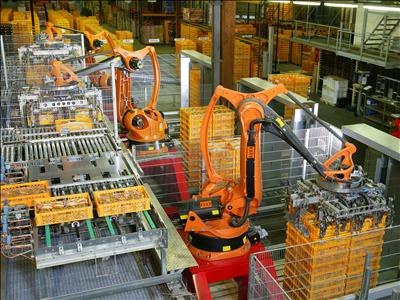Canada will lose up to 7.5 million jobs to automation, new report says

 A new report from the University of Toronto says that technological advances in automation could put between 1.5 million and 7.5 million Canadian jobs at risk over the next ten to 15 years, a trend that is expected to hit not only lower income jobs in the retail and service sectors but also seemingly more secure professions such as doctors, accountants and bankers.
A new report from the University of Toronto says that technological advances in automation could put between 1.5 million and 7.5 million Canadian jobs at risk over the next ten to 15 years, a trend that is expected to hit not only lower income jobs in the retail and service sectors but also seemingly more secure professions such as doctors, accountants and bankers.
“We’re seeing the rise of automation, robotics, artificial intelligence, the gig economy – all of these things together are culminating in a labour market that is far more precarious, far more task-based and in many cases, far more job-free,” says Sunil Johal, Policy Director with the Mowat Centre of the U of T’s School of Public Policy & Governance.
The report says that current labour market trends are combining with emerging technologies to create a precarious job environment. Truck and cab drivers, especially, are within the technological crosshairs, as the move to driverless vehicles is fast approaching and likely to leave a significant number of Canadians out of work. Currently, truck driving employs roughly 500,000 Canadians, representing the second most common occupation for men in Canada.
During the 2008-2009 financial crisis, Canada lost 400,000 jobs, pushing the unemployment rate up a full two points to 8.7 per cent. But Johal says that the upcoming employment culls will be far worse. “We’re talking double, triple or quadruple that number at the low end of these estimates,” he says.
The report contends that in order to meet the challenge, Canada needs significant upgrades to much of its social architecture, meaning that everything from employment insurance and training programs to public pensions, affordable housing and child care must be refitted to the realities of today’s economy.
“The fissures in existing social programs and policies are already evident, whether it is unemployed workers ineligible for EI, a shortage of affordable childcare spaces or barriers to accessing mental health services and pharmaceuticals,” says the report. “As more people enter the gig economy of self-employed, independent contractors or lose out to automation, their place within Canada’s social architecture will become even more tenuous.”
A key recommendation is for more protections for independent contractors and temporary employees around issues such as income security, employee classifications and enforcement of employment standards, all of which need to be more reflective of today’s more volatile job scene.
A recent report on employment in the U.S. and Europe found that 70 per cent of workers undertake independent work as a preferred choice, while 30 per cent are choosing it out of necessity.
That makes for a much more dynamic and fluid marketplace for employment, says Johal, one which Canada has yet to properly respond. He points to the advantages of the current labour market model being practiced in Denmark, called a “flexicurity” model, which aims to provide both flexibility and security to employees. Johal says that this is where Canada needs to be looking.
“The Danish model is much more nimble and supportive and much more in-tune with the 21st century labour market than Canada’s model, which you could characterize as a very good model in the 1960s but not such a good model in 2016,” says Johal.


